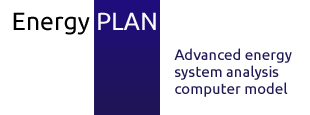The UniSyD3.0 model of national energy and economic systems is a multi-regional partial equilibrium model developed with system dynamics software by the Unitec Institute of Technology, New Zealand in cooperation with Stanford University, USA. While the model was originally developed for New Zealand it can be readily applied to any national economy. The structure of the model is described in [1] with typical results viewable at [2]. Three versions of the software have been created since the first in 2003. The model is available for use under negotiated terms with Unitec [3] (by contacting Prof. Jonathan Leaver). Once the model is configured for a specific national economy, detailed results for a variety of scenarios can be produced with only an hour of training.
The model is constructed with modules that incorporate key sectors of the energy economy and comprises over 1100 variables and 7000 lines of computer code with a 50 year run time of about 1 minute per scenario on a standard laptop. The analysis is normally run using a fortnightly time step with a maximum time-horizon of 50 years. In the primary resources sectors, resources are demanded in response to price sensitive signals and the resources are then allocated into user defined geographical regions based on both price and priority of use. All costs and energy-system sectors except district heating are considered in the model. The electricity sector of the model is driven by a statically defined demand growth and the dynamic interaction of predicted growth with price signals coming from the generation and pricing sectors. All thermal generation except nuclear and all renewable technologies are considered except wave and tidal. Energy storage is considered using a hydrogen – electricity cogeneration option but no direct electricity storage is simulated. In the model hydrogen is produced on an optimised cost basis either on the forecourt by electrolysis or steam methane reforming or on a larger scale by centralised production using coal or biomass gasification and steam methane reforming. Centralised co-generation of hydrogen and electricity using coal gasification and a solid oxide fuel cell topping cycle is also included. The development of both production types is matched to the hydrogen demand and prices of individual production techniques, but hydrogen storage is not simulated. The model incorporates four separate vehicle technologies. These are gasoline internal combustion (ICEV), hydrogen internal combustion (HICEV), hydrogen fuel cell (FCV) and battery electric vehicles (BEV). For each technology there is a fleet of new light vehicles, imported light vehicles, and heavy vehicles. Light vehicles are divided into new and imported vehicles due to the different retail cost of each fleet. The principal outputs of the model are profiles of electricity and hydrogen generation, vehicle fleet numbers, electricity and hydrogen production prices, greenhouse gas emission volumes, primary energy use, and water and air pollution costs.
Previously UniSyD has been used to analyse the potential of a hydrogen economy in New Zealand [1], to assess the impact of four alternative vehicles fleets in terms of GHG emissions [4] and economic impact [5] in New Zealand.
References
- Leaver, J. D., Gillingham, K. T. & Leaver, L. H. T., Assessment of primary impacts of a hydrogen economy in New Zealand using UniSyD. International Journal of Hydrogen Energy, 34(7), pp. 2855-2865, 2009.
- Leaver, J. D. & Gillingham, K. Systems Dynamics Modelling of Pathways to a Hydrogen Economy in New Zealand: Final Report. Unitec New Zealand, 2008,http://www.unitec.ac.nz/fms/research/1_10%20Pathways%20Report.pdf.
- Unitec New Zealand, Unitec New Zealand, 13th June 2009, http://www.unitec.ac.nz/
- Gillingham, K. & Leaver, J. D., Integrated Modelling of the Impact of Four Alternative Fleet Technologies on Greenhouse Gas Profiles in New Zealand, Proc. of the World Hydrogen Energy Conference 2008, pp. 145-148, Brisbane, Australia, 15-19 June.
- Leaver, J. D. & Gillingham, K., Economic Impact of the Integration of Alternative Vehicle Technologies into the New Zealand Vehicle Fleet. Chemical Engineering Transactions, 18, pp. 641-646, 2009.



